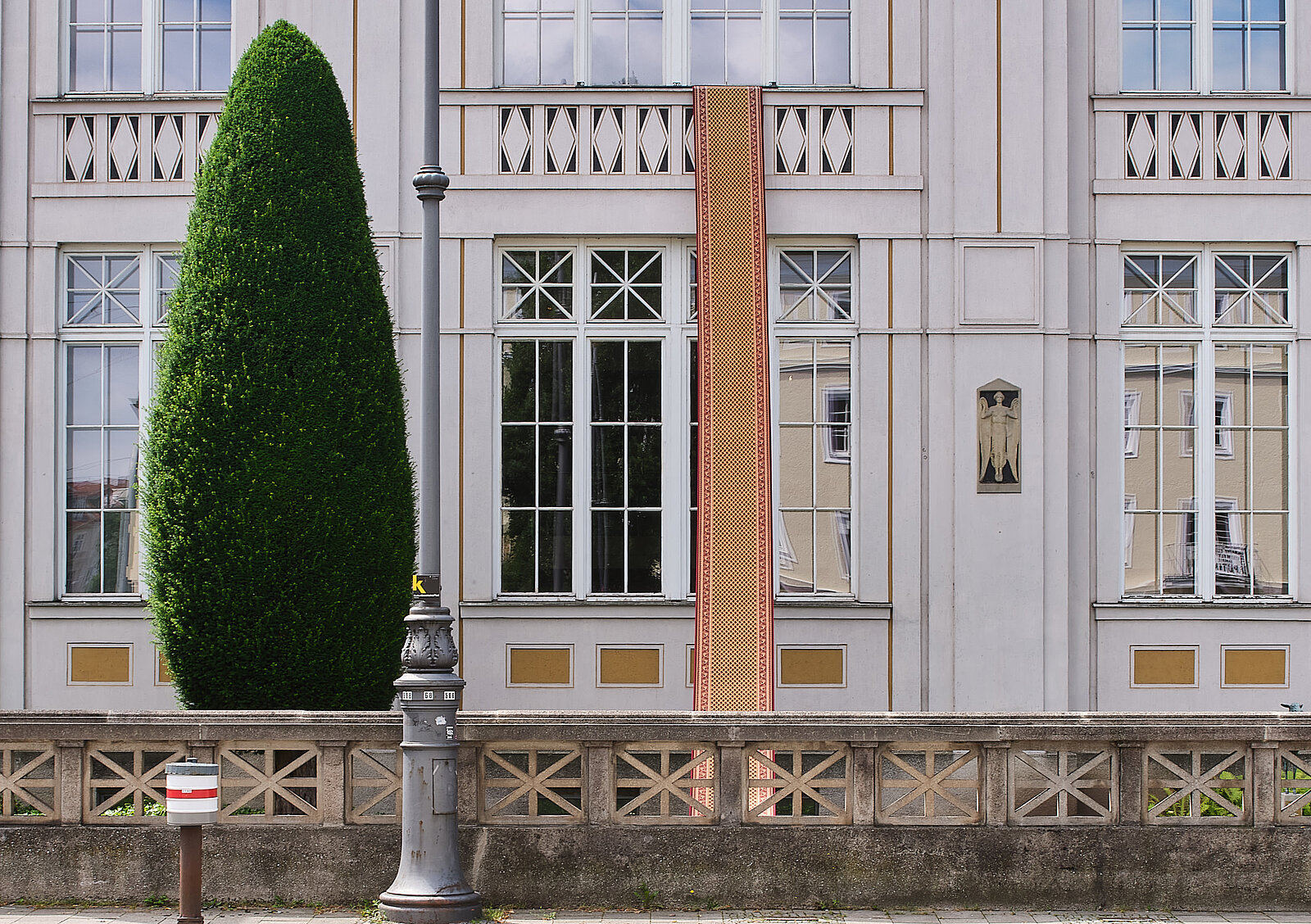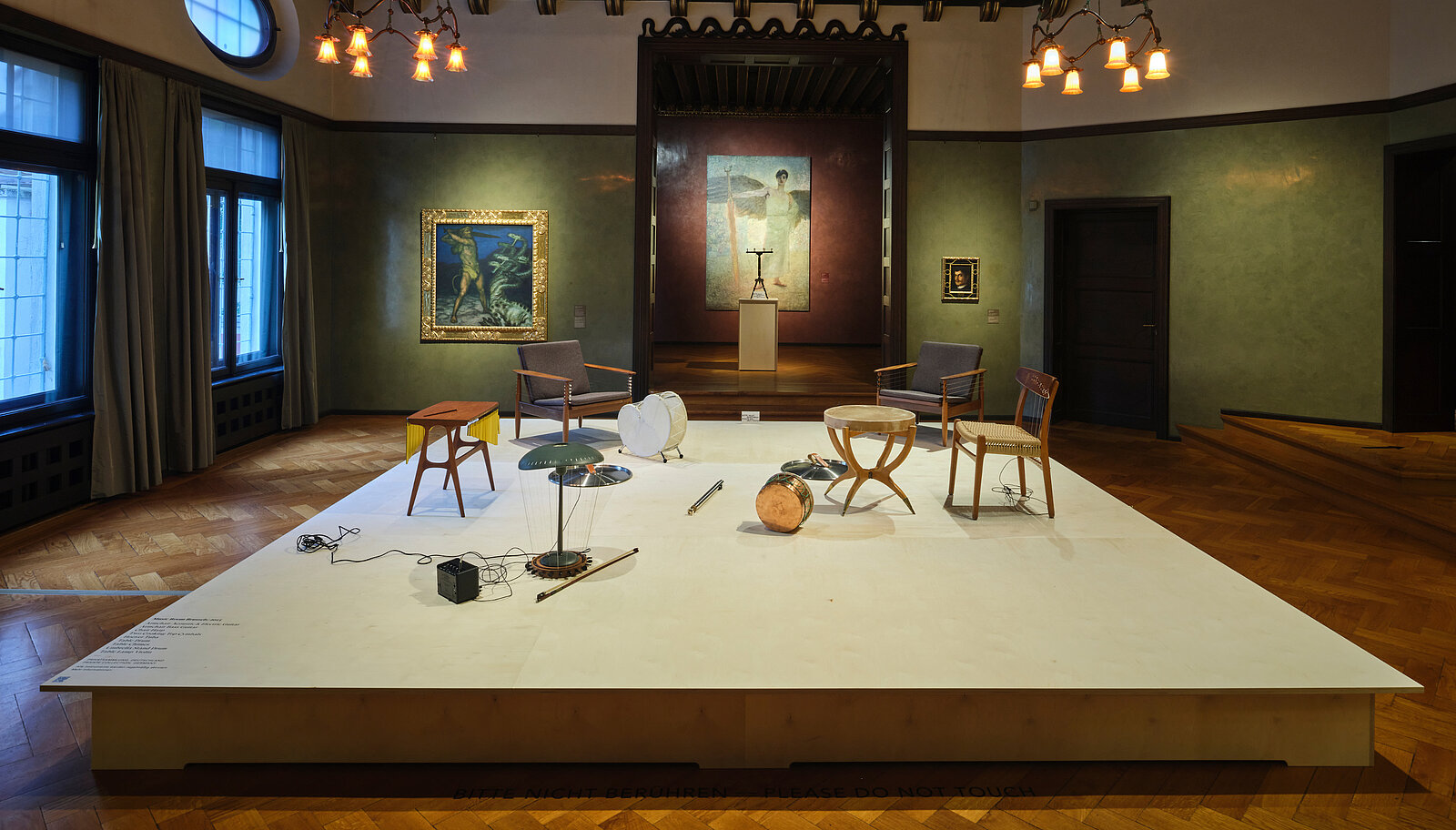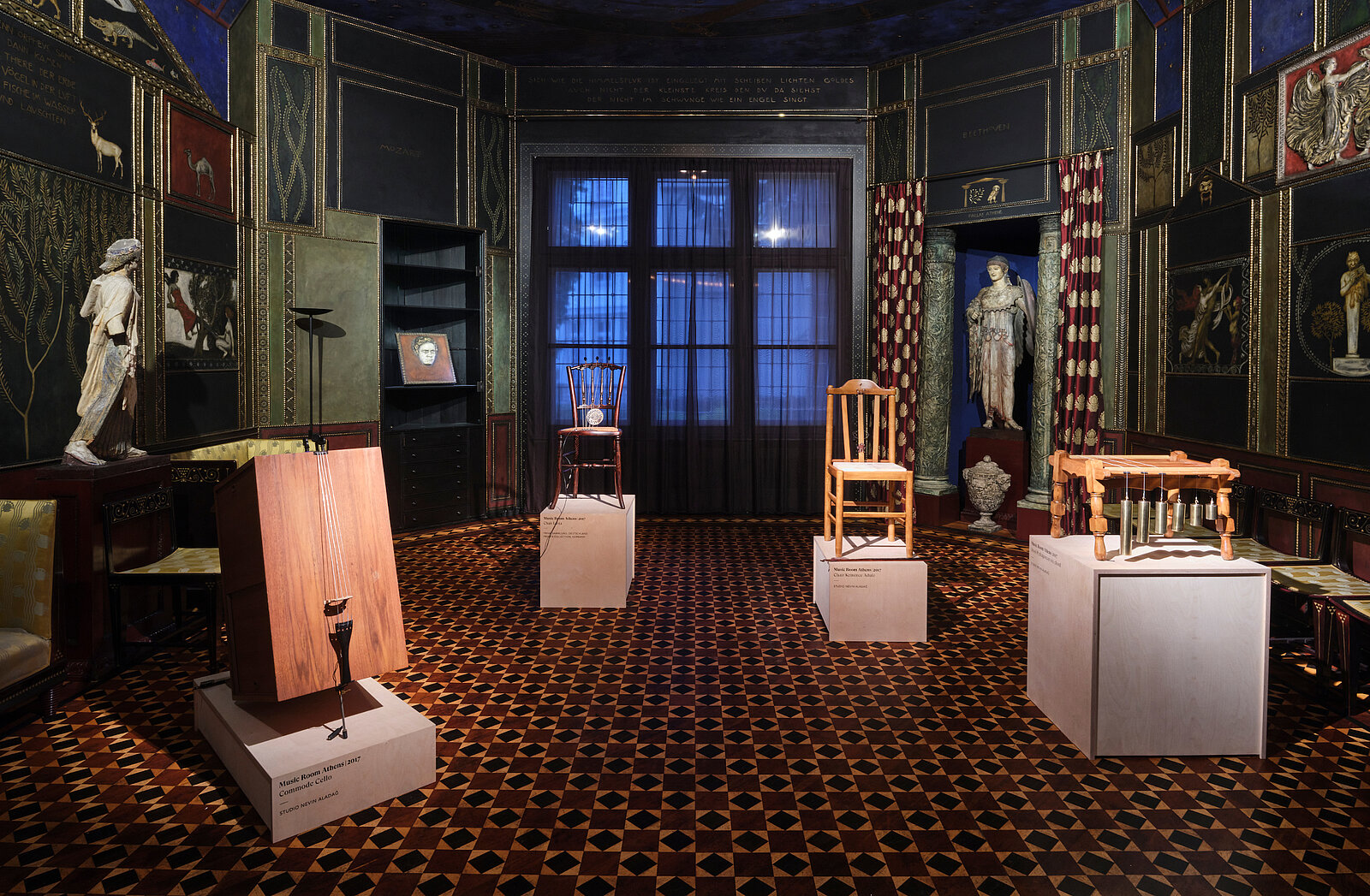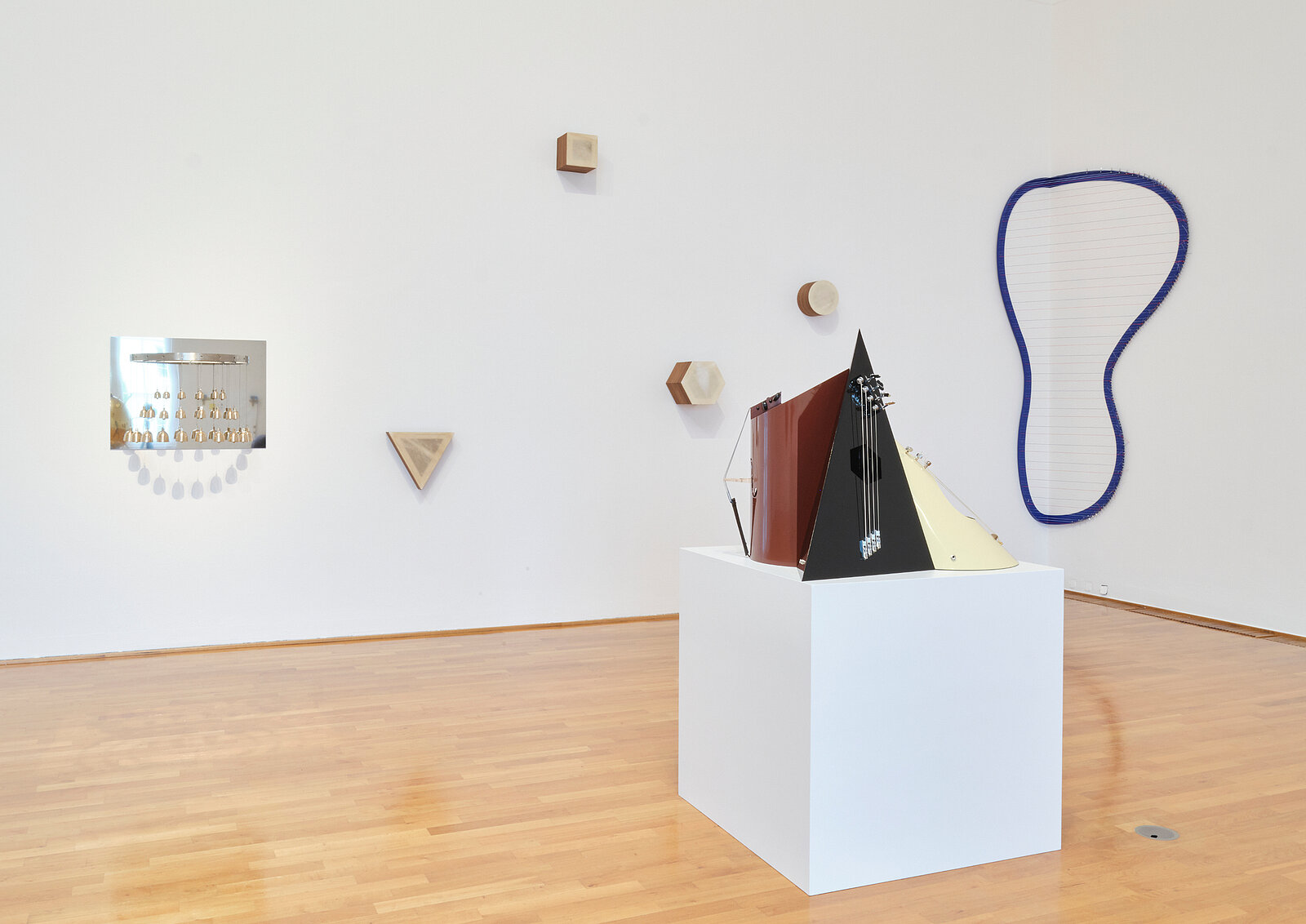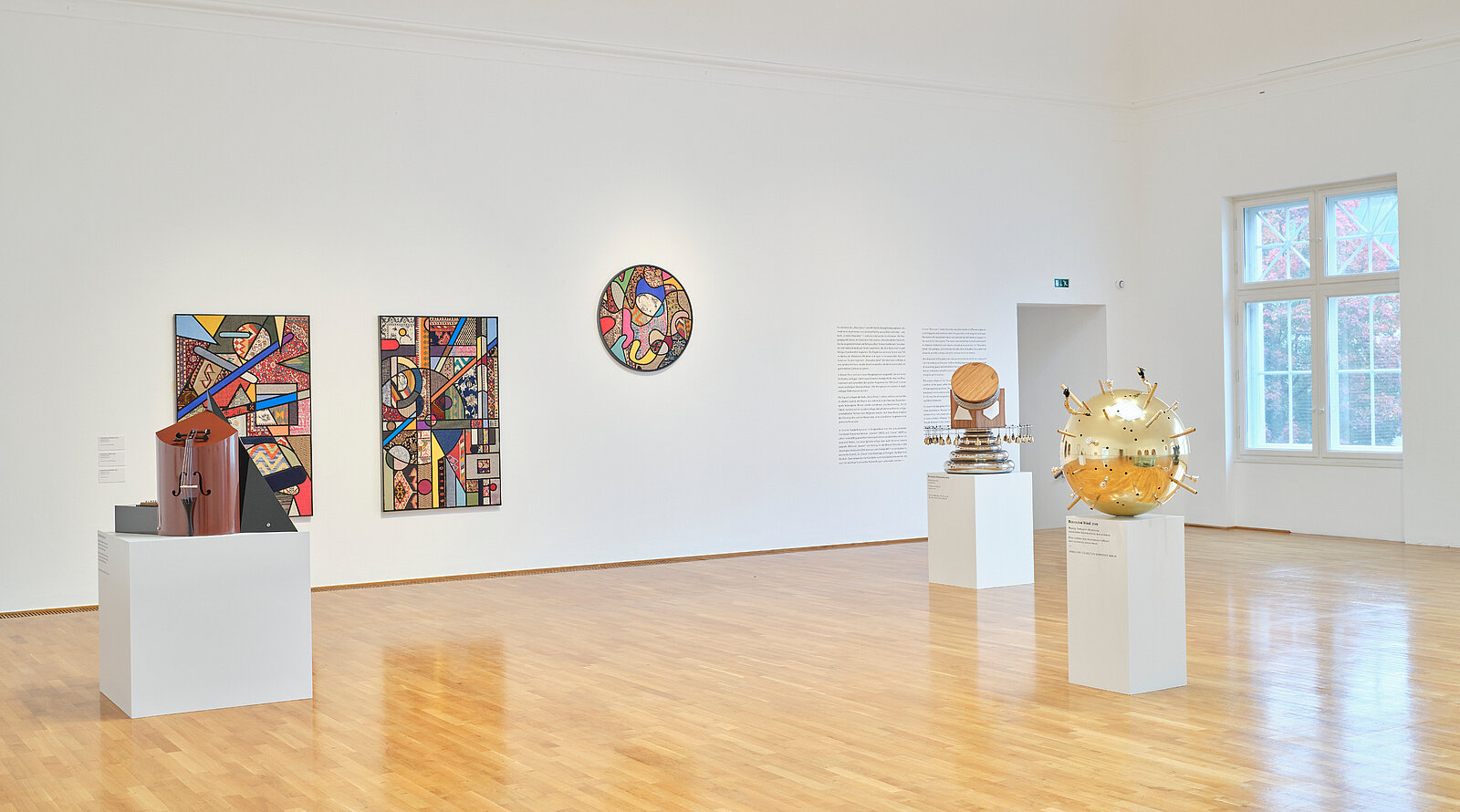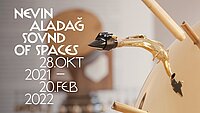The Museum VILLA STUCK presents the most comprehensive solo exhibition to date of Nevin Aladağ featuring a selection of installations, sculptures, textiles, video works and performances. Since the 1990s, the internationally renowned artist has been exploring music and sound as media of art. Playfully and with a keen sense of irony, she combines images and sounds to reveal surprising elective affinities that evoke a wide array of associations. In Aladağ’s world the everyday is set in motion, objects start making music, are transformed and let the imagination run free. In the process Aladağ tests the limits of cacophony, examining when a harmonious overall image is formed without giving up the individuality of the various sound traces. To this end, she experiments with the sound properties of different objects and their simultaneous effect in a variety of media. The resulting diverse, multidisciplinary work can be viewed for the first time in such a broad selection.
The exhibition presents recent works, some created especially for this project, in a dialogue with older work. This juxtaposition highlights recurring motifs and strategies that – very much in line with the principle informing individual works – comment on one another to produce something new. The result is a subtle and humorous “score” that runs through the entire museum, from the historical rooms to the private living quarters and the new studio.
The graphic designer Marion Blomeyer has created an accompanying booklet that takes up the notion of a score throughout the exhibition galleries and considers itself both an inspiring orientation guide and a choreography of the exhibition visit.
GARDEN AND FAÇADE
Displayed on the museum’s façade are two works in which Nevin Aladağ plays with the permeability of public and private space, a particularly evocative theme in the former residence of Franz von Stuck. “Voyeur” (1996), a video projection that only becomes visible after dark, shows the silhouettes of a couple in a room, triggering curious speculations about what the two might be talking about. The abundance of associations ranges from “Rear Window” to personal experiences during lockdowns. The “Rug” (2001) hanging from the new studio window down to the street similarly encourages you to reflect on the relationship between inside and outside.
“Color Floating” (2020), a light-flooded structure covered with variously colored nylons and literally multilayered, is on view in the garden.
MUSIC ROOMS
The exhibition inside begins in the reception rooms of Franz von Stuck. Individual pieces of furniture gently fit into the historical ambience and are only recognized at second glance as hybrids from Aladağ’s “Music Rooms” (2014–2017). The artist took pieces of furniture and everyday objects she specifically looks for at flea markets and had them converted into instruments. In selecting them, it is important to her that they are objects that could be found in any living space, though at the same time their shape and material should meet acoustic requirements. For the Museum Villa Stuck, Aladağ developed a golden “Frame Harp” that faces Stuck’s paintings of musical subjects. “Music Room Brussels,” a complete ensemble activated in monthly performances by musicians, is in the center of the sequence of galleries.
VOICE OVER
Aladağ finds her material in everyday life, often in urban areas. In the video work “Voice Over”, which is shown in Stuck’s old studio, she combines the singing of two boys with instruments played by the wind and rain. The opening sequence featuring a harmonica that she holds in the airflow outside the car window to make it sound is a good example of the close interplay between optical and acoustic stimuli. As the instrument translates the shapes of the surrounding skyscrapers into a landscape format, the transition between the two levels becomes blurred. In this way, the artist elicits a sound both from the instrument and the image and reveals the poetry of urban space.
PATTERNS
On view in the first part of the upper floor are a series of works in which Aladağ experiments with patterns and ornaments of different origins that in turn create a dialogue with the decoration of Stuck’s residence. These non-acoustic works are characterized by an open structure that, analogous to the artist’s polyphonic works, allows the individual fragments to remain independent. As Aladağ describes it, she brings things together “that supposedly do not go together, because they come from different historical, religious or political contexts”.
Made of synthetic hair, the curtains in the 2012 “Rehearsals” series at first glance elude classification, as the artist opens up one of her typical chains of associations: hair, hairstyle, curtains, stage .... The weightiness of the curtains as prestige objects is counterpointed with the lightness of the colorful hairstyles.
RAISE THE ROOF / STILETTOS
Raise the Roof is the title of the performance which was presented in 2017 at the Venice Biennale and served as the basis for the video work of the same title. Nevin Aladağ first conceived this invitation to dance with abandon in Berlin in 2007, where she had the dancers perform on a rooftop right by the former border between East and West Berlin. The artist contrasts the collective event with a private experience that is denied to the audience, as the songs can only be heard by the dancers. As their spontaneous dance movements reveal, each one them is alone. All that can be observed from the outside are the title and length of the various pieces that are printed on the dancers’ T-shirts. The resulting distance draws our attention to a different sound: the clatter of shoes on copper plates, which gets denser as more dancers join.
The video works “City Language III” (2009) and “Top View” (2012) center on the ability of the body to produce sounds, as different people perform short pieces with their hands or feet. The artist uses the results to create unusual city portraits consisting of sound and image sequences. Such ideas also point of departure of Aladağ’s most recent work, “Body Instruments” (2021): a costume with bells, drums and accordions that is activated as part of a performance.
In her “Stilettos” series, which partly grew out of the performances, Nevin Aladağ has been collecting dance traces since 2005 and declaring them artworks. She uses the high heels as “embossers” to graphically transfer songs. But the traces also read like subsequent choreographic instructions, a post-hoc score pointing to what happened and at the same time open to reinterpretation.
Traces as memories of the past, as a necessarily faded possibility of remembrance take on a historical dimension in “Tusch” (Fanfare). The artist used cannonballs to notate the short pieces of music on staff lines. The spherical segments are iron casts of originals from the eighteenth and nineteenth centuries. But the force of the weapon meets the elegance of the staff, revealing the typically ambivalent structure inherent in the work of Nevin Aladağ.
RESONATORS / SOCIAL FABRIC: SOUND OF SPACES
The series “Social Fabric” (2017–2021) and “Resonators” (2018/19) are on view in the large domed room of the new studio. Aladağ creates sound sculptures that can usually be assigned to a particular family of instruments or, as in the case of the “Great Resonator,” combine multiple ones. The artist uses instruments of different origins as a starting point and combines them into geometric and imaginative shapes. She works with instrument makers to offer her technical support in her search for new sounds. The results are sometimes formally reminiscent of classical modernism and sometimes inspire conceptual associations. In “Resonator Wind,” for example, she translates the idea of an air bubble into a spherical shape to provide a common casing for the wind instruments assembled in it.
Also displayed in this gallery are new, architecturally defined sound sculptures that are a further elaboration of “Resonating Space Mannheim” (2020–2021): percussive elements are displayed on the walls, while bells, a harp and a guitar are placed at the corners. The sound of spaces is the object of artistic attention; the carpet collages of “Social Fabric” draw on Aladağ’s experiments with patterns, but also affect the acoustic qualities of the space in this context. All sound sculptures are activated in regular performances.
TRACES / SESSION
The exhibition concludes with the monumental 3-channel video installations “Session” (2013) and “Traces” (2015). In carefully chosen camera shots, both works show how drums, among other objects, are played by sand and waves or even by a sprinkler system. Recurring motifs include instruments being pulled through water or held outside a car, as well as the image of rolling tambourines. While “Session” is a work commissioned by the United Arab Emirates that involves only percussive instruments, “Traces” pays tribute to Stuttgart, the artist’s childhood city. In the latter, Aladağ also employs melodic instruments, some of which are subjected to humorous transformations.
About the artist
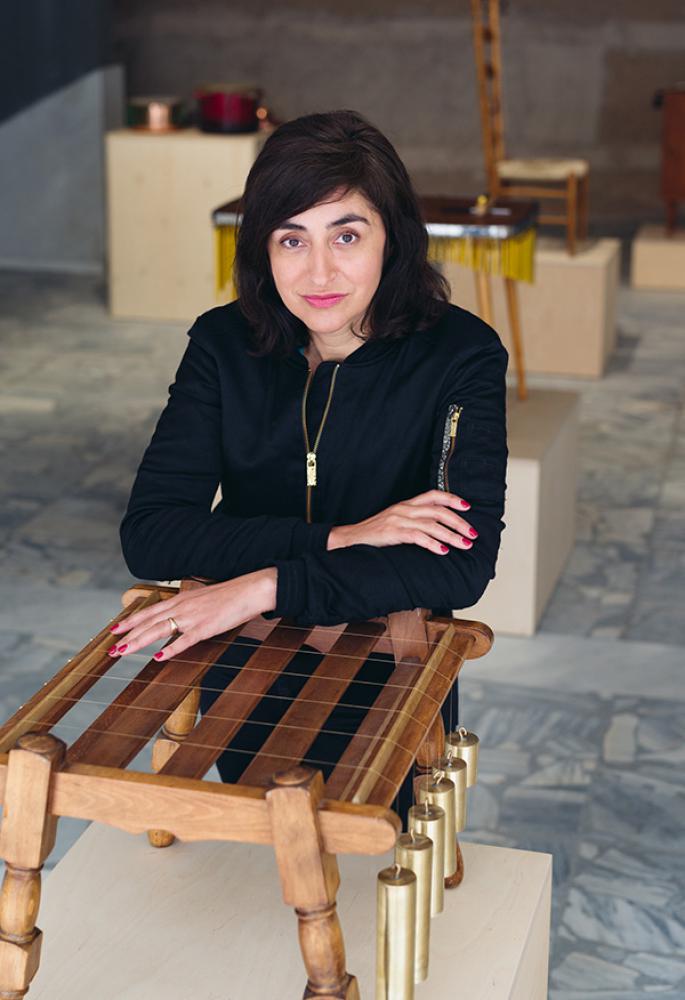
Until 2000, Nevin Aladağ studied sculpture under Olaf Metzel at the Munich Academy of Fine Arts. Today the award-winning artist lives in Berlin. In 2020 she was appointed Professor of Interdisciplinary Artistic Practice at the Dresden Academy of Fine Arts (Hochschule für Bildende Künste).
Her work can be found in public and private collections throughout the world, including the Centre Pompidou in Paris; the collection of Sheikha Hoor Al-Qasimi in Sharjah, United Arab Emirates; Thyssen-Bornemisza Art Contemporary in Vienna; the collection of the Vehbi Koç Foundation in Istanbul; Es Baluard Museu d’Art Contemporani de Palma in Palma de Mallorca; Hamburger Kunsthalle; Kunstmuseum Stuttgart; Neue Nationalgalerie in Berlin; and Kunsthalle Mannheim.
The artist contributes regularly to exhibitions and biennials throughout the world. In recent years, the shows at the San Francisco Museum of Art, the Venice Biennale, documenta 14 and the Kemper Museum of Contemporary Art in Kansas City have brought her a great deal of attention.
100 Sekunden mit Nevin Aladağ und Helena Pereña
Program
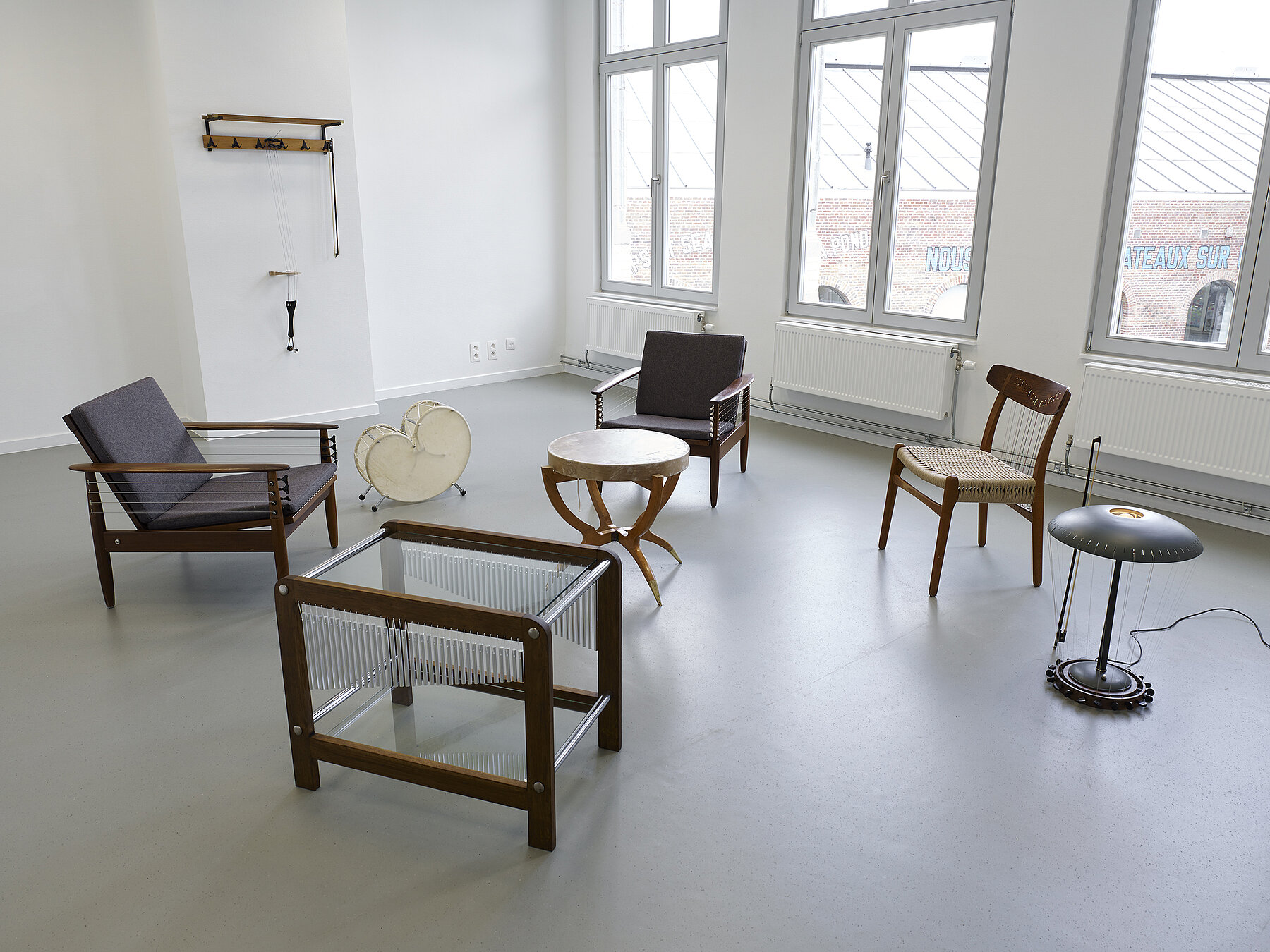
Nevin Aladağ develops music sculptures out of existing, modified or newly designed soundboxes. She converts pieces of furniture into musical instruments for her “Music Rooms,” combines various members of an instrument family in the “Resonators” and designs architecturally defined spatial instruments in “Resonating Space.” Musicians of the Neues Kollektiv München NKM activate these sculptures as part of performances that go through various sections and can be viewed by the public while touring the exhibition.
NKM – Neues Kollektiv München is a contemporary music ensemble. The artistic practice of NKM is informed by a close interaction between creative performers and music-making composers. The musicians elicit a distinctive sound from the sculptures to create a performance that embraces experimentation and improvisation.
October 1, 2021, 5:30 – 6:30 p.m. as part of FRIDAY LATE
“Music Room Brussels”
preview performance, approx. 10-minute time slots with a limited number of participants
Nov. 12, 2021 / Dec. 1, 2021 / Jan. 13, 2022 / Feb. 17, 2022, 7 – 8 p.m.
From the “Music Rooms” to the “Resonators” and “Resonating Space”
approx. 10-minute time slots with a limited number of participants, may be combined with a visit to the exhibition
February 10, 2022, 7 – 8 p.m.
Musical performance involving activation of the “Body Instruments”
Neues Kollektiv München NKM
Publication
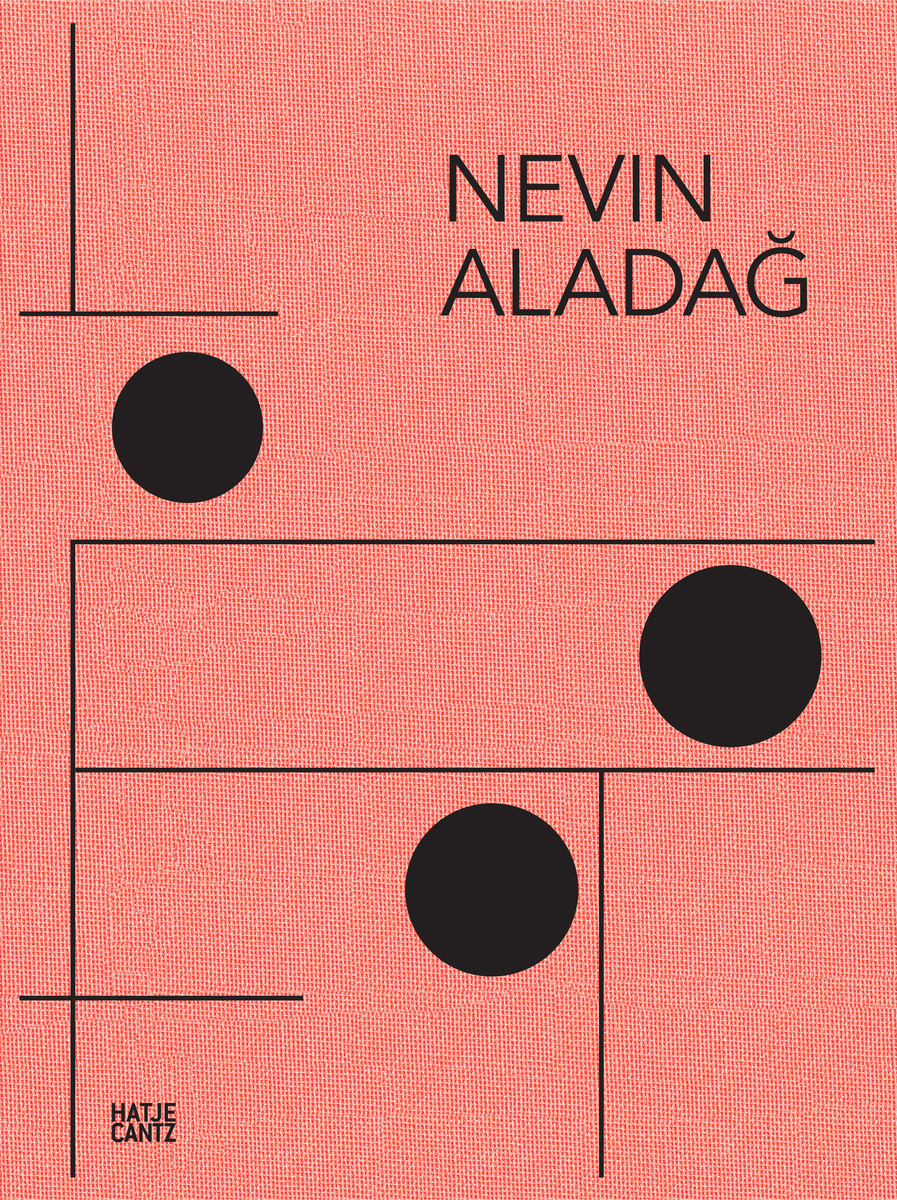
A comprehensive book featuring 200 full-page color reproductions will be published in conjunction with the exhibition. Designed by Alexandra Rusitschka and published by Hatje Cantz, the publication includes essays by major supporters and art scholars such as Rachel Jans and Adam Szymczyk as well as a contribution by the award-winning writer Ulrike Draesner specially conceived for this volume. The contributors examine the artist’s work from different perspectives in their texts.
Edited by Michael Buhrs and Helena Pereña, with texts (in German and English) by Ulrike Draesner, Rachel Jans, Sara Kühner, Helena Pereña, Adam Szymczyk, 2021. 288 pages, 200 illustrations, hardcover, cloth binding, 21.5 x 27 cm. ISBN 978-3-7757-5143-8.
The embossment Aladağ has developed for a limited special edition of the cover lends the publication an artistic note. The special edition has a print run of 50 copies embossed and signed by the artist’s hand. A few copies can be purchased at the museum.

